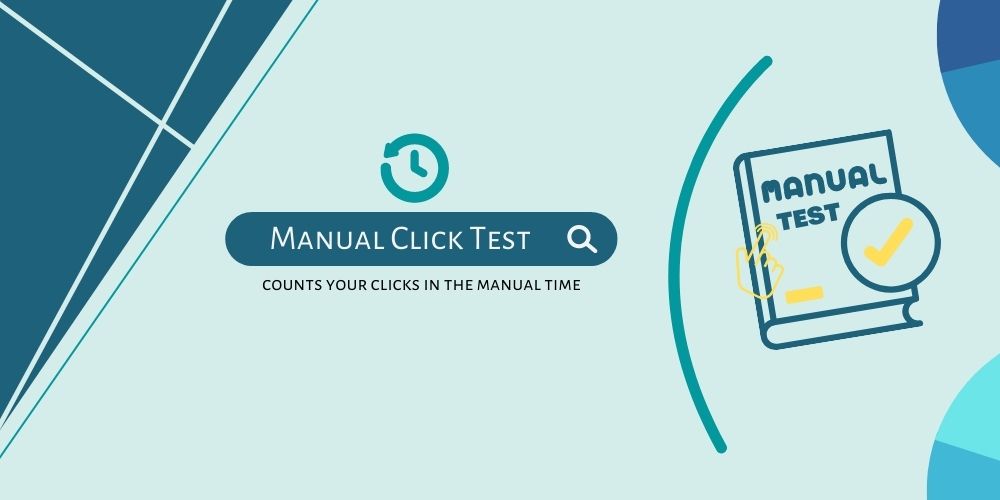- 1 Second Test
- 2 Second Test
- 5 Second Test
- 10 Second Test
- 15 Second Test
- 30 Second Test
- 60 Second Test
- 100 Second Test
You May Like These Free Online Tools:
Users of the Manual Click Test can test their click speed with no time restrictions. You only need to keep clicking at the same rate for as long as possible because, unlike the usual CPS test, this one does not automatically finish after a certain amount of time. Once the test is complete, you can manually end it.
Manual CPS Test
When you want to evaluate your clicking ability, all scenarios such as establishing a timer for a click speed test are eliminated. It is impossible to assess your clicking speed within a set time range. Therefore, we have developed a system that allows you to test your current clicking speed over an infinite time and determines how long you can keep clicking at a certain rate per second.
The Manual CPS test calculates how many mice clicks an individual can perform in a predetermined number of seconds. You may check your click speed online for no cost using one of the numerous click speed test sites.

How does Manual Click Test work?
The inbuilt click counter adds clicks as soon as the user begins playing. Additionally, as soon as the user clicks the “Start Playing” checkbox for the first session, the countdown timer begins.
The click counter grows as more clicks are made in succession. When the allotted time has passed, the values for CPM (Clicks per minute) and CPS (Clicks per second) are finally shown. The monitor, however, will only function in the designated area. To obtain the desired outcome, you simply click on the ideal playing area.
Also Take a Complete CPS Test Before You Go For Manual Test
Different time spans of CPS Test
- 3-second test
- 4-second test
- 5-second test
- 10-second test
- 15-second test
- 30-second test
- 60-second test
- 100-second test
You can choose any duration for the clicking test; if you’re a beginner, start with 3 seconds and track your development. Write your record for the subsequent 10 seconds. Practice a lot to get better at clicking games if you want to click more quickly.
Features of a Manual Click Test
1. No timeframe
This strategy’s main advantage is that there is no time restriction. The test can be stopped at any time. Your clicking performance improves because of it.
2. Challenge yourself
By using the cps manual click test mode, you may see how fast you can click. It tests your ability to maintain the rate of clicks per second for an extended period.
FAQ’s
1. How do I determine my click-per-second (cps) rate?
Total clicks / Total time in seconds equals clicks per second (CPS). Just follow the easy instructions to check your Clicks per second score.
2. What is the click’s CPS rate?
The CPS stands for clicks per second on average. It serves as a gauge for how quickly you can press a mouse. The CPS rate is the outcome of the Click speed test.
3. How can I carry out a manual click test?
Under the primary test, select the ‘Manual Click Test’ button. You are now on the page for the Manual Click Test. Click the green button to start the test. As much as you can, keep clicking.







